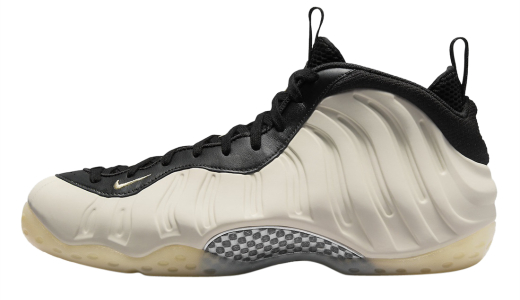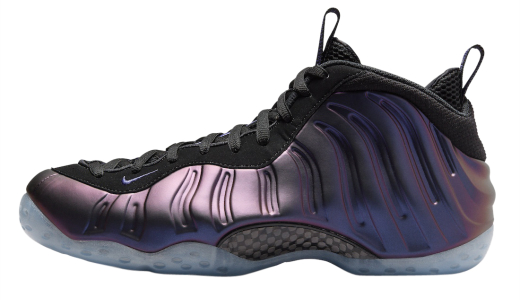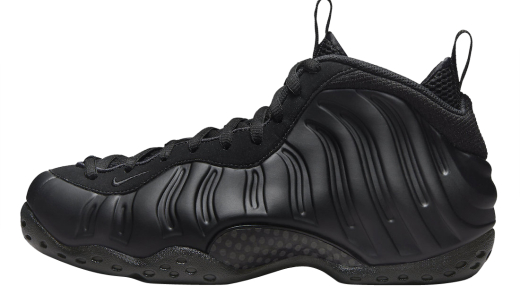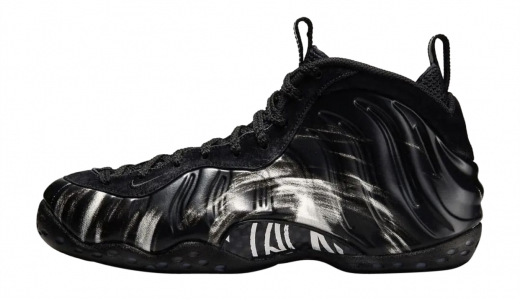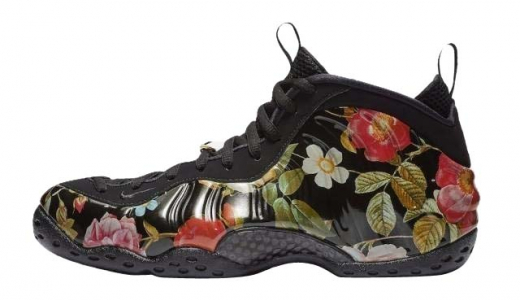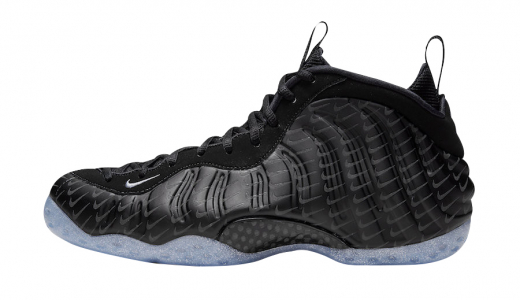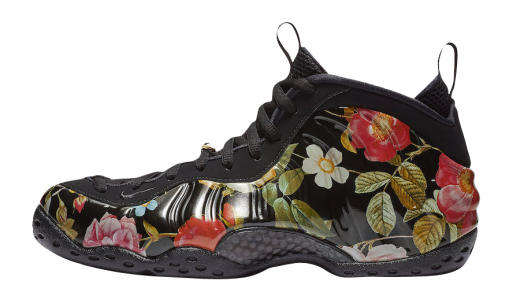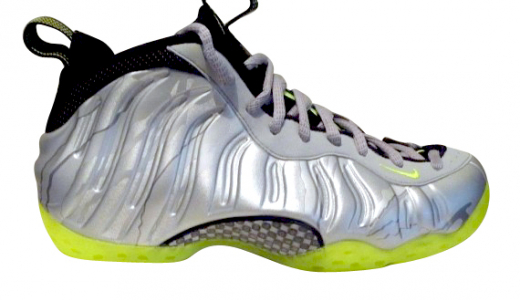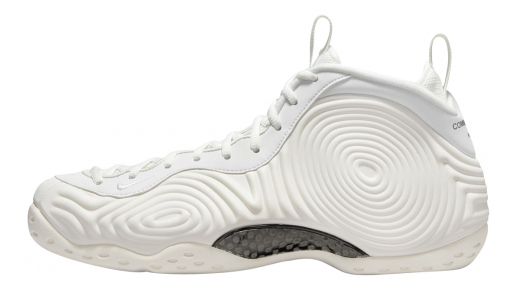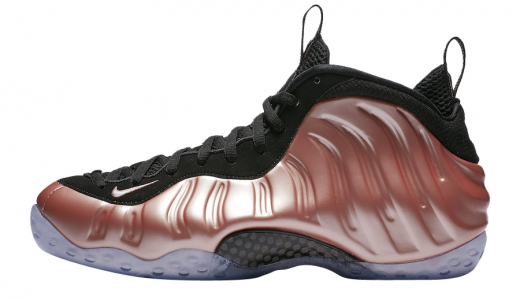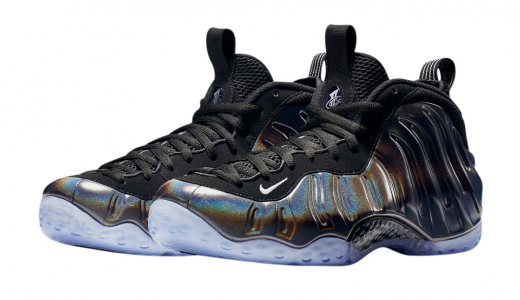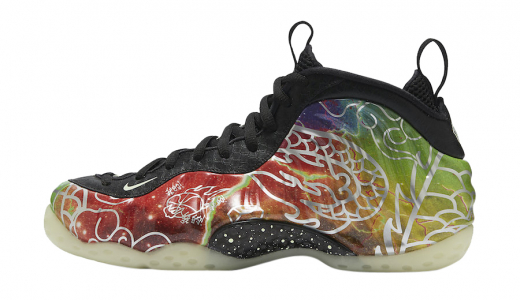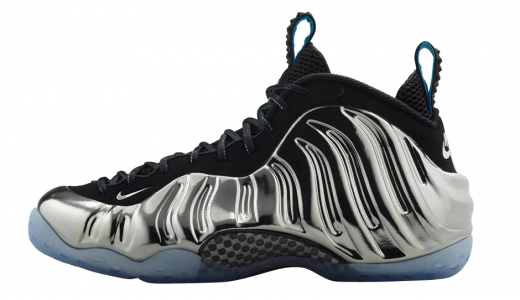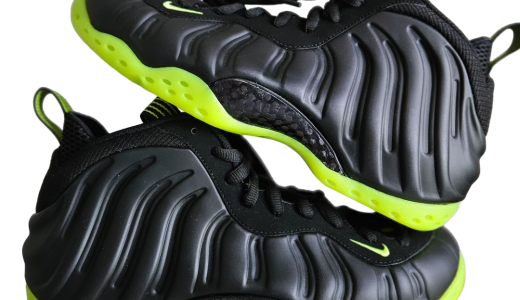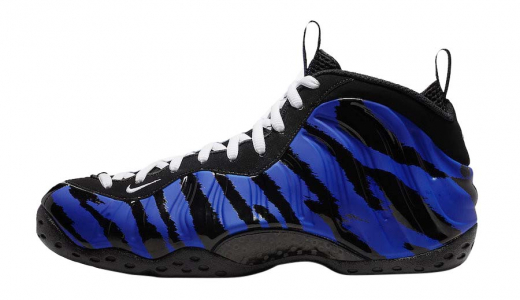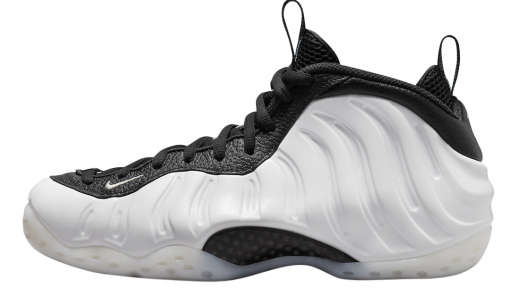Nike Air Foamposite One
The Nike Air Foamposite One is a groundbreaking sneaker that debuted in 1997, revolutionizing the basketball shoe market with its innovative design and advanced technology. Created by designer Eric Avar and initially endorsed by NBA star Penny Hardaway, the Foamposite One features a uniquely molded upper made from a synthetic material known as Foamposite. This gave the shoe an otherworldly aesthetic that was both futuristic and functional. The one-piece upper provides a glove-like fit that adapts to the wearer's foot, offering unparalleled support and stability. Additionally, the shoe incorporates a carbon fiber shank plate for enhanced responsiveness and a Zoom Air cushioning system for superior comfort during high-impact activities.
Over the years, the Nike Air Foamposite One has transcended its basketball roots to become a cultural icon within the sneaker world. Its distinctive look and cutting-edge technology captured the imagination of not only athletes but also sneaker enthusiasts and fashion-forward individuals. Special releases, collaborations, and limited editions have furthered the shoe’s legendary status, often causing overnight campouts and rapid sell-outs upon release. The Foamposite One's influence extends beyond the court, impacting fashion trends and streetwear culture. Despite the influx of new technologies and designs in the sneaker industry, the Nike Air Foamposite One remains a timeless classic that continues to captivate diverse audiences around the globe.
History of Nike Air Foamposite One
A History of the Nike Air Foamposite One (1997-2021)
Introduction
The Nike Air Foamposite One remains one of the most iconic and groundbreaking sneaker models ever released. Launched in 1997, it represented a quantum leap in design, material science, and sneaker culture. Over the past two decades, the Air Foamposite One has evolved, influenced various subcultures, and maintained a strong presence in the sneaker world. This comprehensive history will trace its development, cultural significance, and ongoing legacy.
The Genesis: The Vision Behind Foamposite Technology
The mid-1990s were a fertile period for Nike's technological innovation. Looking to push the boundaries of both design and functionality, Nike's Eric Avar and the Advanced Product Engineering Team aimed to create a shoe that felt "sculpted" rather than assembled. Their vision was revolutionary: a one-piece seamless upper that conformed to the foot like a second skin.
Avar's inspiration came from a variety of sources, including vehicles and insects, leading to a shoe that looked like it was from the future. The underlying challenge was to develop a material technology that could meet these unprecedented design requirements.
Engineering Breakthrough: From Concept to Reality
Creating the Foamposite was a formidable engineering challenge. Nike partnered with Daewoo, a South Korean chemical company, to develop the lightweight and resilient foam material. The polyurethane liquid used for the Foamposite upper was heated to extreme temperatures and then molded into the desired shape. This process allowed for the creation of a one-piece form, diverging from the traditional multi-layered construction of most athletic shoes.
Nike had to address multiple production issues, from reshaping mold techniques to ensuring material durability. The complexity of this process meant that a single mold cost around $750,000, an astronomical figure at the time. Despite these hurdles, the team persisted, driven by the potential for a sneaker that would redefine performance and aesthetics.
The Debut: Nike Air Foamposite One 1997
The Nike Air Foamposite One made its debut on the feet of NBA star Anfernee "Penny" Hardaway. Hardaway was one of the most electrifying players in the league and a key figure in Nike's roster of athletes. The Foamposite debuted in a striking "Royal Blue" colorway, immediately capturing attention both on and off the court.
Upon release, the sneaker boasted several state-of-the-art features: - **Posite Foam Upper**: A single piece upper that provided unparalleled support and durability. - **Zoom Air Unit**: For responsive cushioning. - **Carbon Fiber Shank**: To provide stability and flexibility. - **Heel Tab and Loop**: For ease of wear.
The Foamposite One's retail price was set at $180, making it one of the most expensive basketball shoes at its release. Opinions were divided; athletes praised its performance benefits, while some consumers flinched at the high price tag and unconventional aesthetics.
Cultural Impact and Popularity
While initially met with mixed reviews, the Foamposite One gradually gained a cult following. A key driver of its popularity was its association with Penny Hardaway, who sported the shoe during the 1997 NBA season and subsequent All-Star Game. Penny's appeal, charisma, and elite game elevated the Foamposite's status among basketball fans and sneakerheads alike.
Moreover, the Foamposite became a significant element in hip-hop and streetwear culture. Rappers and influencers frequently showcased the shoe, broadening its appeal. The sneaker's futuristic design resonated with a generation gravitating toward bold, boundary-pushing fashion.
Collaboration and Limited Editions: Solidifying Legacy
By the early 2000s, the Nike Air Foamposite One had established itself as a classic. Nike capitalized on this momentum, releasing various colorways and limited editions. Particularly notable collaborations include:
- **ParaNorman** (2012): A collaboration with Laika for the animated film "ParaNorman," featuring glow-in-the-dark elements and quirky design details. - **Galaxy** (2012): Released during the NBA All-Star Weekend, this celestial-inspired sneaker caused chaotic scenes at retail stores due to its immense popularity. - **Tianjin** (2015): Celebrating Chinese culture and heritage, this release featured intricate detailing and vibrant color schemes.
These collaborations solidified the Foamposite's status as not just a basketball shoe but a cultural artifact.
Sustainability and Technological Innovation
In recent years, Nike has increasingly focused on sustainability. The Foamposite One has been re-engineered with an emphasis on environmentally friendly materials. Advancements in manufacturing and material science have made it possible to recreate the iconic silhouette while minimizing waste and energy consumption.
Contemporary versions of the Foamposite offer enhanced performance features, making them not only a symbol of Nike's past ingenuity but also of its future commitments.
The Foamposite in Sneaker Culture
The secondary market for Foamposites has been a testament to its enduring allure. Resale platforms often see coveted colorways and editions selling for multiples of their original retail prices. The sneaker's collectibility is a significant aspect of its ongoing legacy.
Additionally, the Foamposite has spawned various iterations and spin-offs, including the Foamposite Pro and Foamposite Lite. Each version continues to push the envelope in terms of design and functionality, contributing to the family's legacy.
Global Influence
While the Foamposite's origin story is deeply rooted in American culture, its impact has been global. In Europe and Asia, especially, it has gained significant traction. Nike's strategic releases in these markets, featuring exclusive designs tailored to regional tastes, have broadened its appeal. The Tianjin release, for example, was a nod to Chinese heritage and was immensely popular in China.
Challenges and Criticisms
Despite its iconic status, the Foamposite hasn't been without its challenges. The high cost remains a barrier for some consumers. Additionally, its unique design, while celebrated by many, doesn't appeal to everyone, making it a polarizing model.
Moreover, the intricacy of its production process has posed sustainability challenges. However, Nike's recent strides towards more eco-friendly practices indicate a promising evolution.
The Future of the Foamposite
As of 2021, the Nike Air Foamposite One continues to be a canvas for innovation and cultural expression. With advancements in material science, sustainability practices, and design technology, the Foamposite is well-positioned to maintain its relevance.
Nike's commitment to marrying heritage with innovation ensures that the Foamposite will continue to captivate future generations. Given its history, it’s evident that the Foamposite One is more than just a sneaker; it's a landmark in the annals of sportswear history.
Conclusion
The Nike Air Foamposite One is a testament to what can be achieved when pioneering vision meets relentless innovation. From its groundbreaking debut in 1997 to its status as a cultural icon, the Foamposite One has continually pushed the boundaries of what athletic footwear can be. Its storied past and promising future make it a symbol of Nike's dedication to performance, design, and cultural relevance. Whether on the basketball court, in the streets, or in the annals of sneaker history, the Nike Air Foamposite One stands out as a truly revolutionary piece of footwear.
